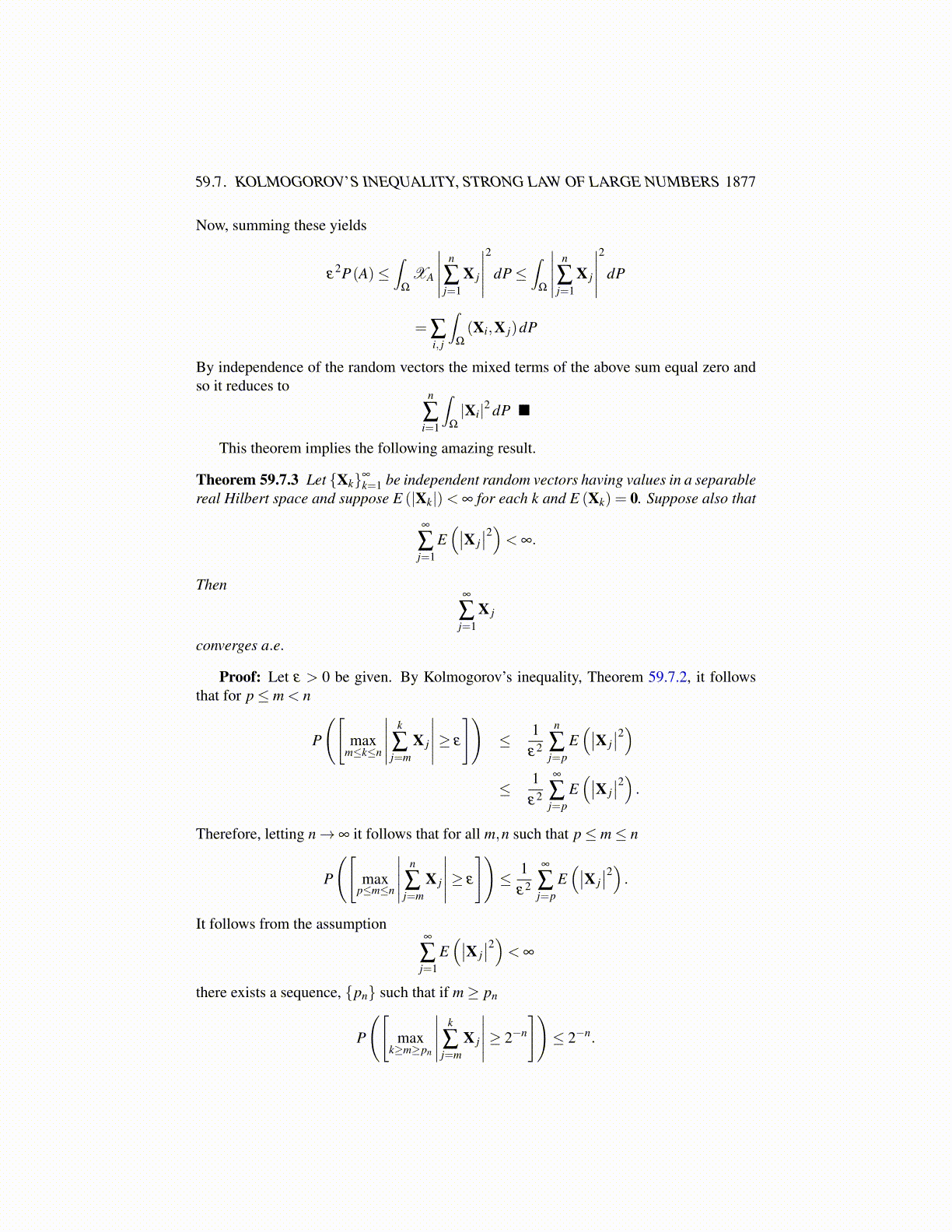
59.7. KOLMOGOROV’S INEQUALITY 1877
=∫
Ω
|X| |Y|dP≤(∫
Ω
|X|2 dP)1/2(∫
Ω
|Y|2 dP)1/2
< ∞
and so by Fubini’s theorem,∫Ω
(X,Y)dP =∫
Ω
∞
∑k=1
(X,ek)(Y,ek)dP =∞
∑k=1
∫Ω
(X,ek)(Y,ek)dP
=∞
∑k=1
∫Ω
(X,ek)dP∫
Ω
(Y,ek)dP =∞
∑k=1
(∫Ω
XdP,ek
)(∫Ω
YdP,ek
)dP
=
(∫Ω
XdP,∫
Ω
YdP)
Now here is Kolmogorov’s inequality.
Theorem 59.7.2 Suppose {Xk}nk=1 are independent with E (|Xk|) < ∞, E (Xk) = 0. Then
for any ε > 0,
P
([max
1≤k≤n
∣∣∣∣∣ k
∑j=1
X j
∣∣∣∣∣≥ ε
])≤ 1
ε2
n
∑j=1
E(|Xk|2
).
Proof: Let
A =
[max
1≤k≤n
∣∣∣∣∣ k
∑j=1
X j
∣∣∣∣∣≥ ε
]Now let A1 ≡ [|X1| ≥ ε] and if A1, · · · ,Am have been chosen,
Am+1 ≡
[∣∣∣∣∣m+1
∑j=1
X j
∣∣∣∣∣≥ ε
]∩
m⋂r=1
[∣∣∣∣∣ r
∑j=1
X j
∣∣∣∣∣< ε
]
Thus the Ak partition A and ω ∈ Ak means∣∣∣∣∣ k
∑j=1
X j
∣∣∣∣∣≥ ε
but this did not happen for∣∣∣∑r
j=1 X j
∣∣∣ for any r < k. Note also that Ak ∈ σ (X1, · · · ,Xk) .
Then from algebra, ∣∣∣∣∣ n
∑j=1
X j
∣∣∣∣∣2
=
(k
∑i=1
Xi +n
∑j=k+1
X j,k
∑i=1
Xi +n
∑j=k+1
X j
)
=
∣∣∣∣∣ k
∑j=1
X j
∣∣∣∣∣2
+ ∑i≤k, j>k
(Xi,X j)+ ∑i≤k, j>k
(X j,Xi)+ ∑i>k, j>k
(X j,Xi)